Quiet time for orcas: noise reduction strategies that can assist killer whales in their foraging and communication
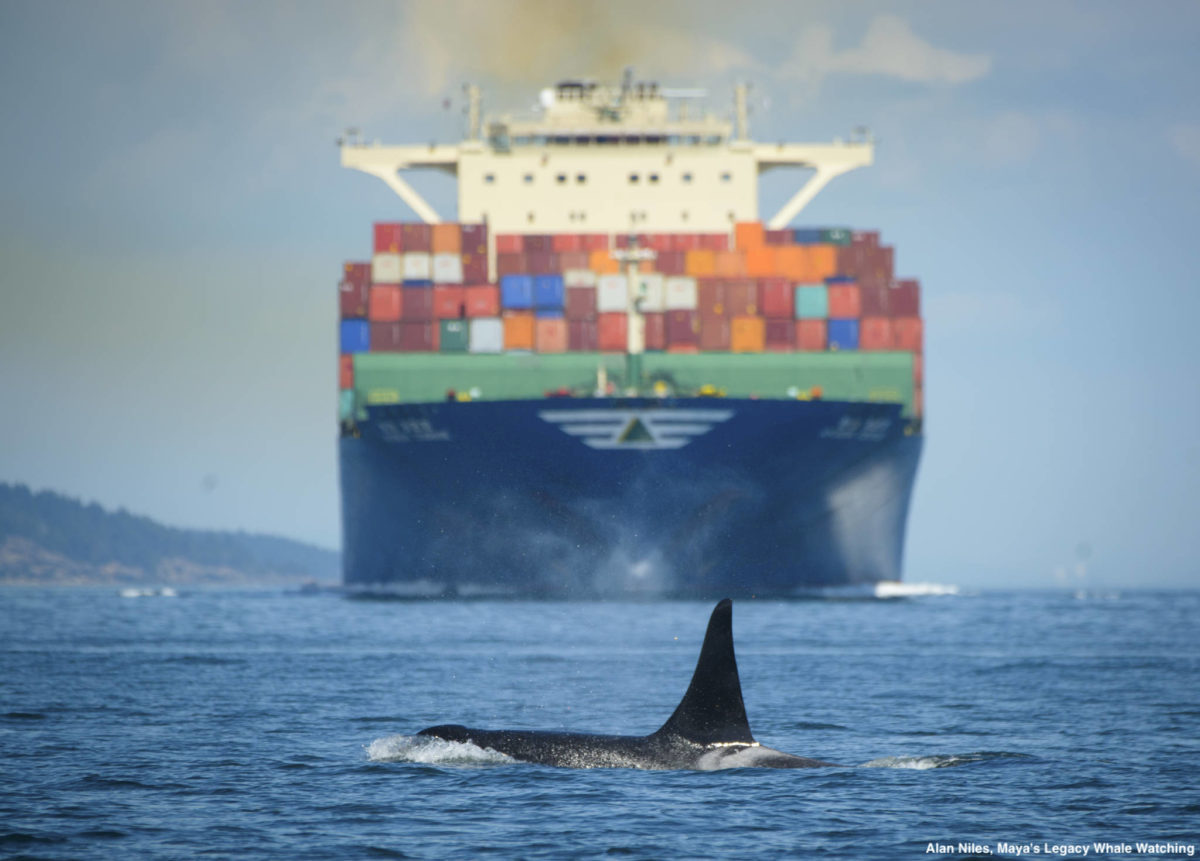
Val Veirs, Orcasound Hydrophone Network
Scott Veirs, Beam Reach
Lauren McWhinnie, Patrick O’Hara, & Gregory O’Hagan, NEMES (Noise Exposure to the Marine Environment from Ships)
Salish Sea Ecosytem Conference, April 6, 2018
Orcasound.net
15 years of listening for whales in the (U.S.) Salish Sea
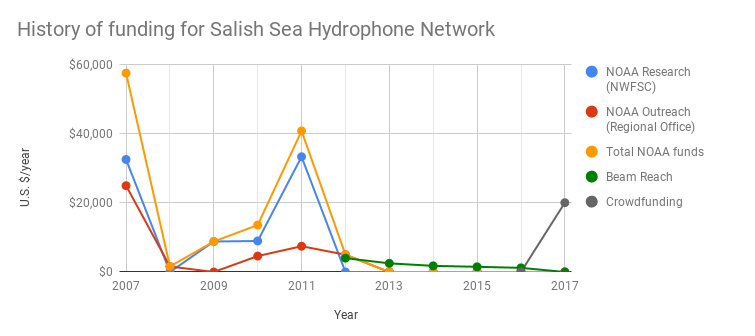
Orcasound hydrophone network organizational members (2018):
Beam Reach
Colorado College, Physics & Environmental Science
Orca Network
Port Townsend Marine Science Center
Orca Behavior Institute
Cetacean Research Technology
Whale Scout
Deep Green Wilderness
Oceans Initiative
Friends of Lime Kiln Society (FOLKS)
The Whale Trail
The Center for Whale Research
Orcasound app and Orcasound Lab
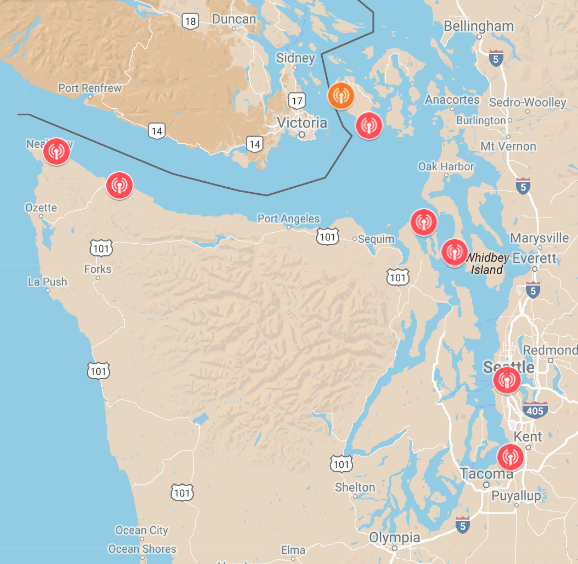
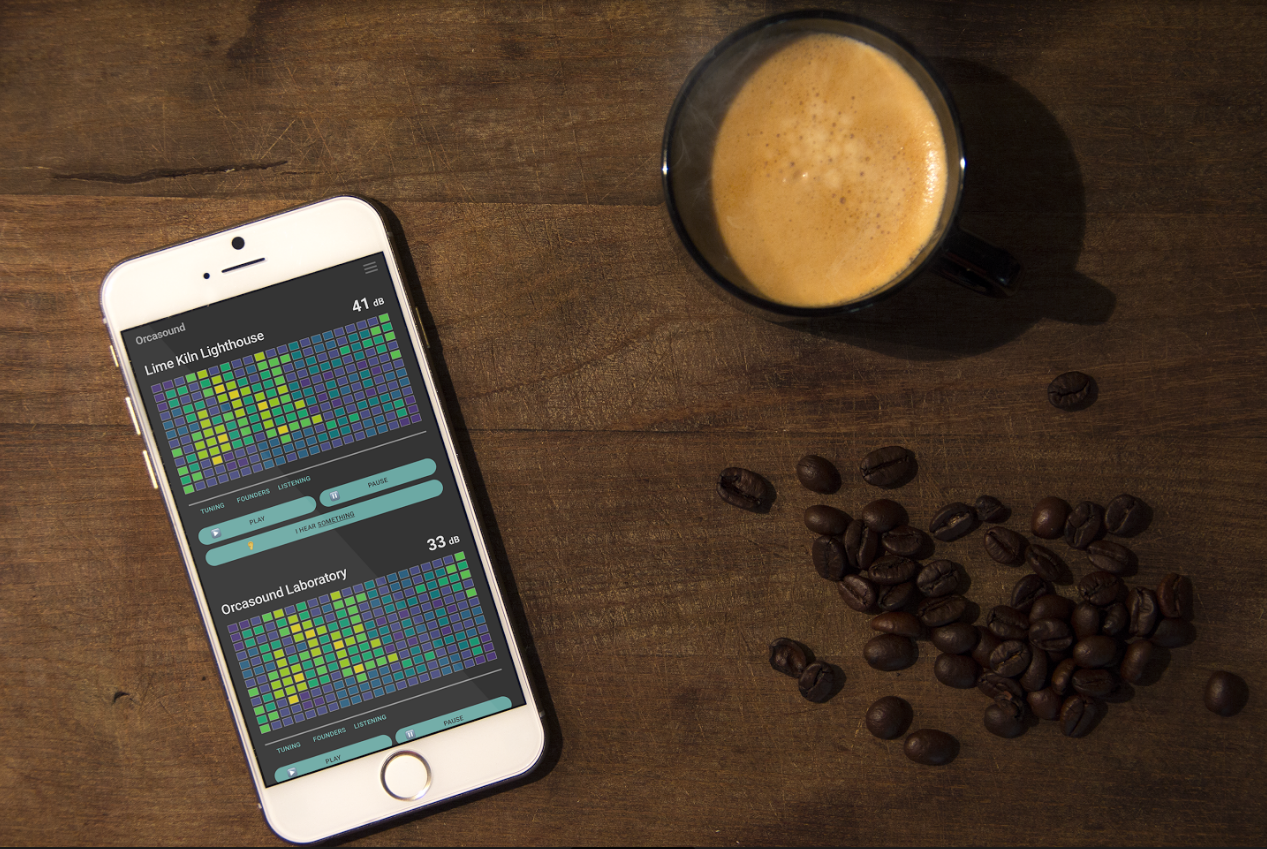
|
Our study site:
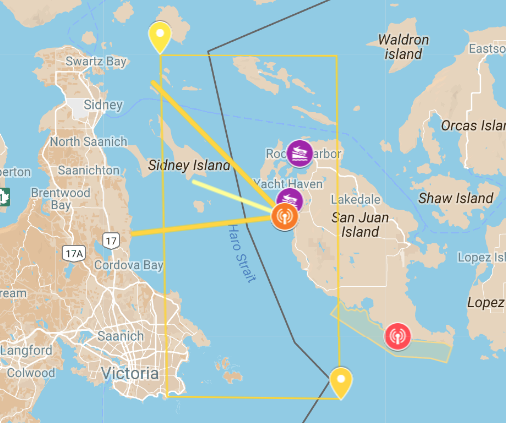
|
Thank you to everyone who backed our Kickstarter!
Potential impacts of noise on SRKWs
|
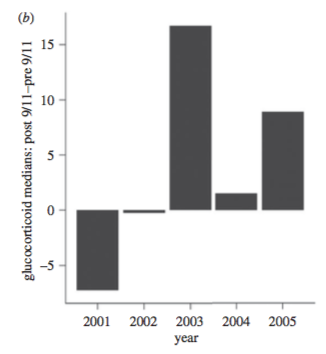
|
We know: SRKWs respond to noise
| 2003: U.S. Navy uses sonar in Haro Strait with SRKW behavior change observed by Center for Whale Research | |
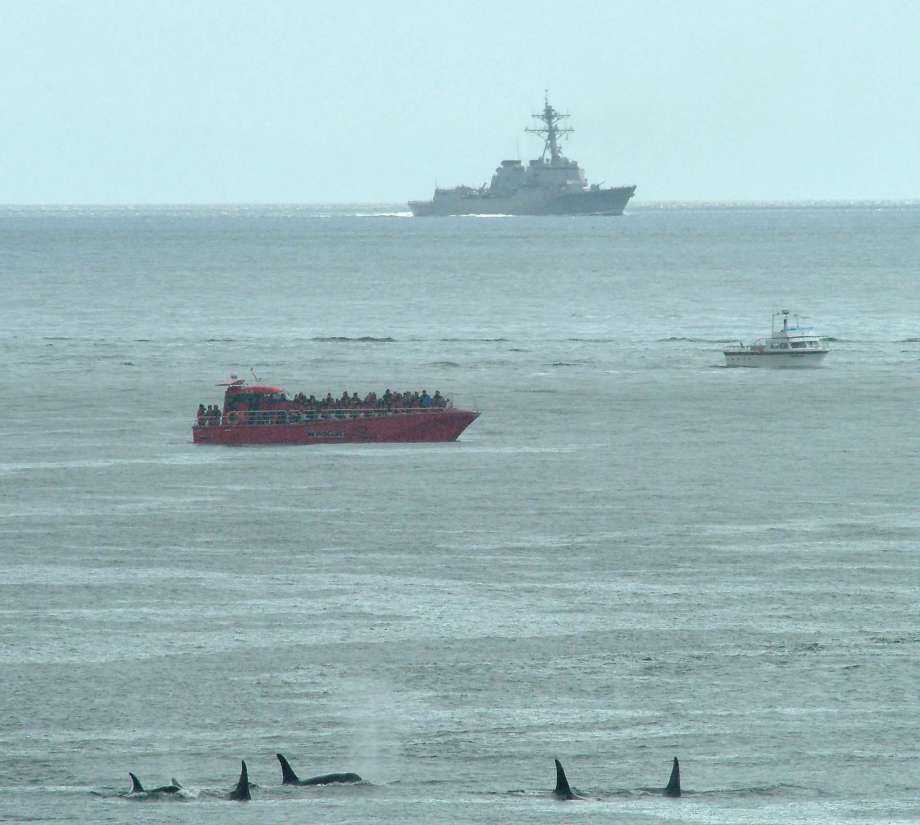 |
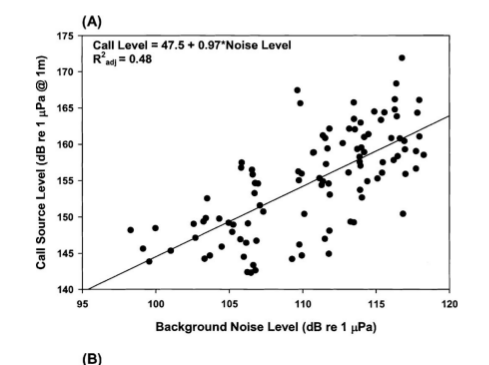 |
| 2009: SRKWs "speak up" in noise from nearby boats (Holt, Noren, Veirs, Emmons & Veirs) |
Vessel noise can mask both calls & clicks
Frequencies of vessel noise overlap with SRKW hearing and signals Veirs, Veirs, & Wood (2016, PeerJ)
Veirs, Veirs, & Wood (2016, PeerJ)
|
It's already too loud!
We also know:
|
We have many options to "more than mitigate" vessel noise.
13% of ships radiate 1/2 the fleet's power

Veirs, Veirs, Williams, Jasny, & Wood (Authorea pre-print, March, 2017)
Quieting strategies can be combined...
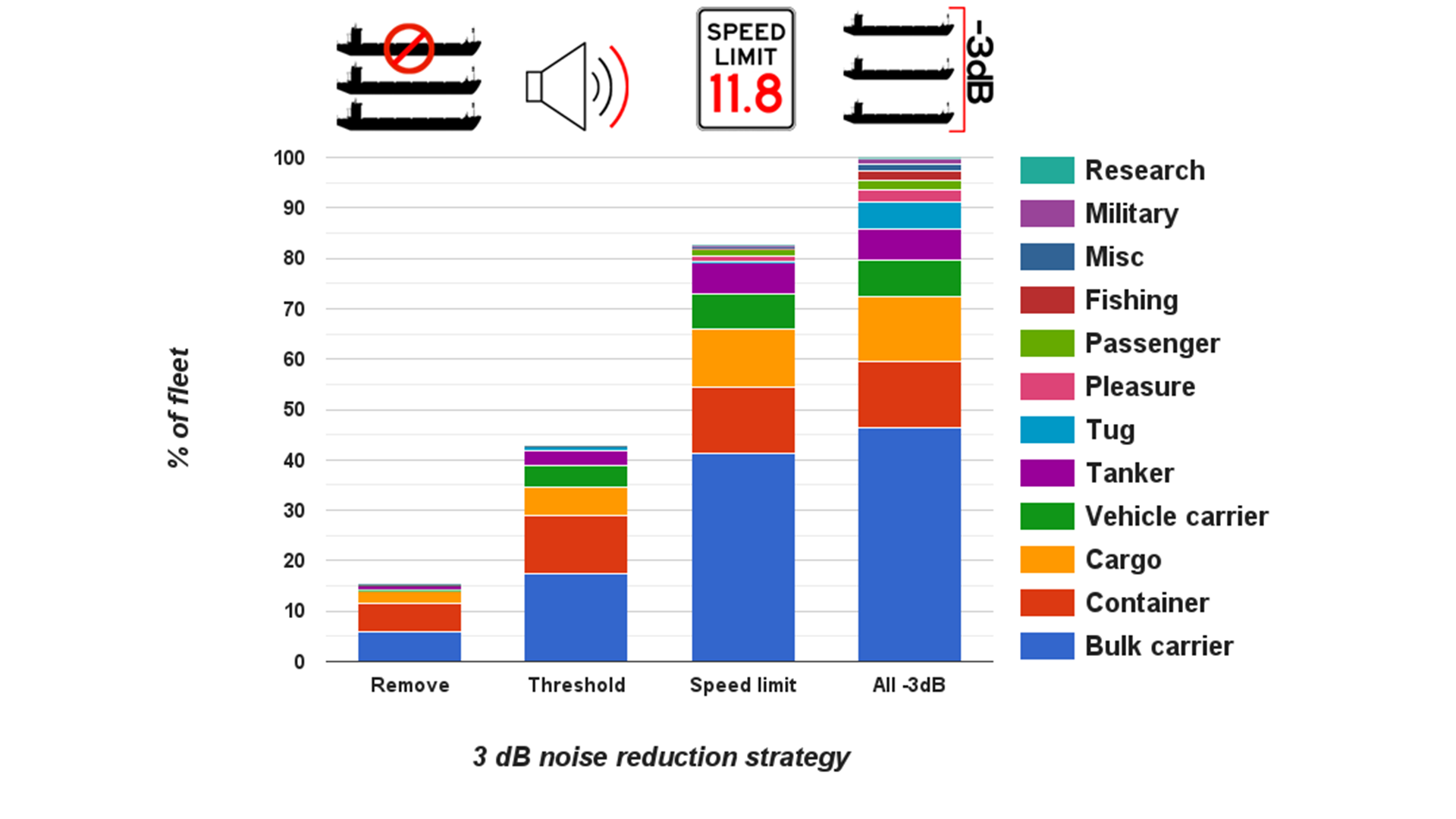
Veirs, Veirs, Williams, Jasny, & Wood (in rev., 2018; PeerJ pre-print)
2017 SRKW behavorial study during slow-down trial
Collaboration with Oceans Initiative
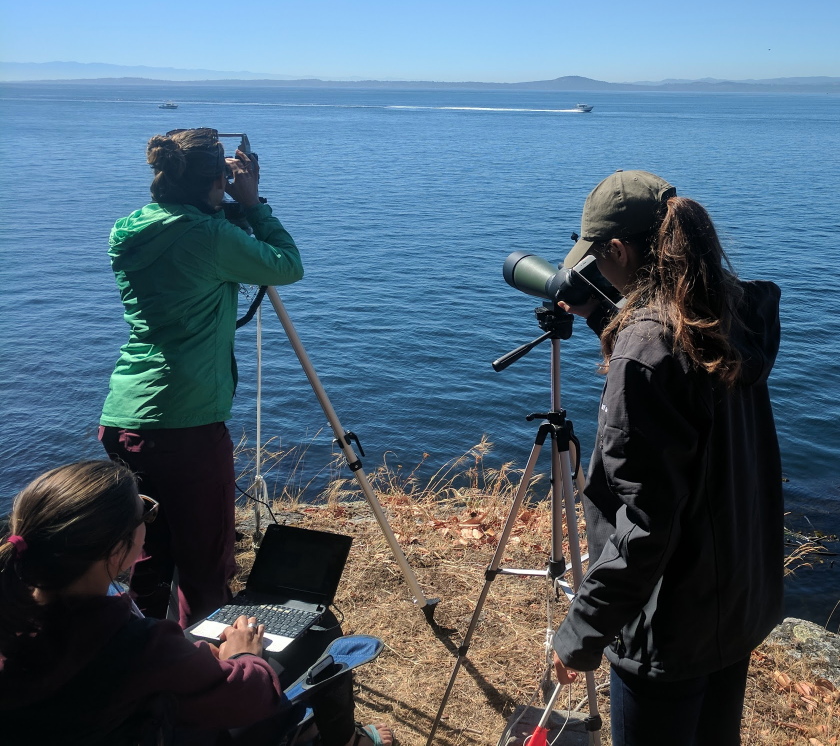 |
Theodolite data table
|
- If we are only studying vessel noise, and not funding assessment of behavioral response, then conduct slow-down trials when SRKWs are not present (i.e. winter, not summer).
- Thanks to private, philanthropic "rapid response" funders: Christina Koons, Jim McIntire, Stephanie Solien, Frank Greer, & Glen and Deb Bruels.
- To help fund analysis, contact Erin Ashe & Rob Williams.
2017 vessel behavior and noise study
Collaboration with NEMES
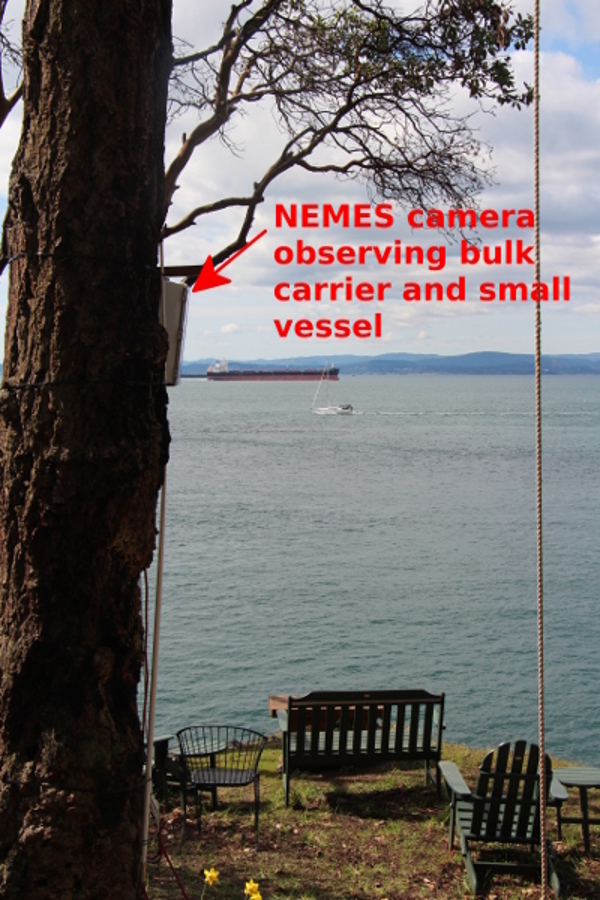 |

Continuous hydrophone and AIS data; intermittent images during daytime. |
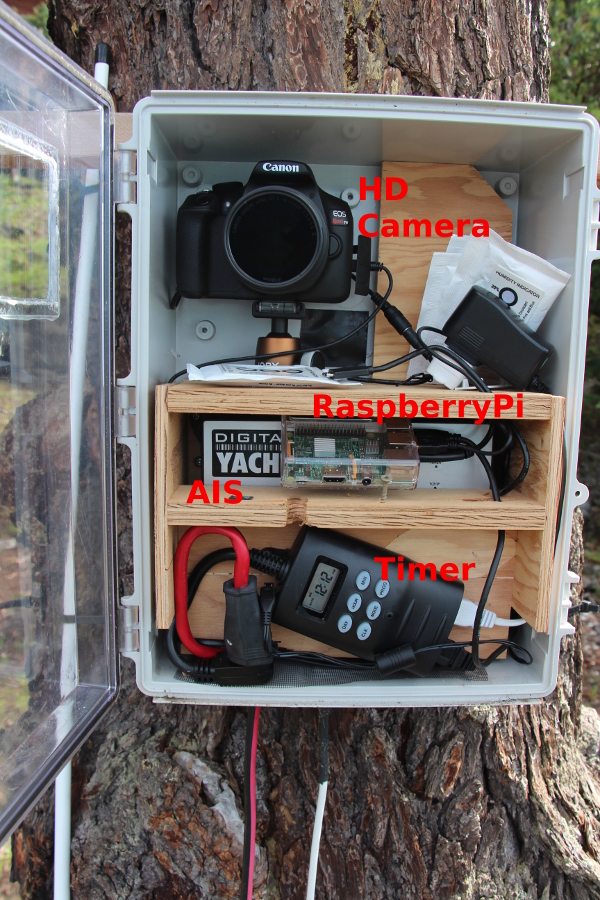 |
Receive levels are similar, but boat noise is brief compared to ships
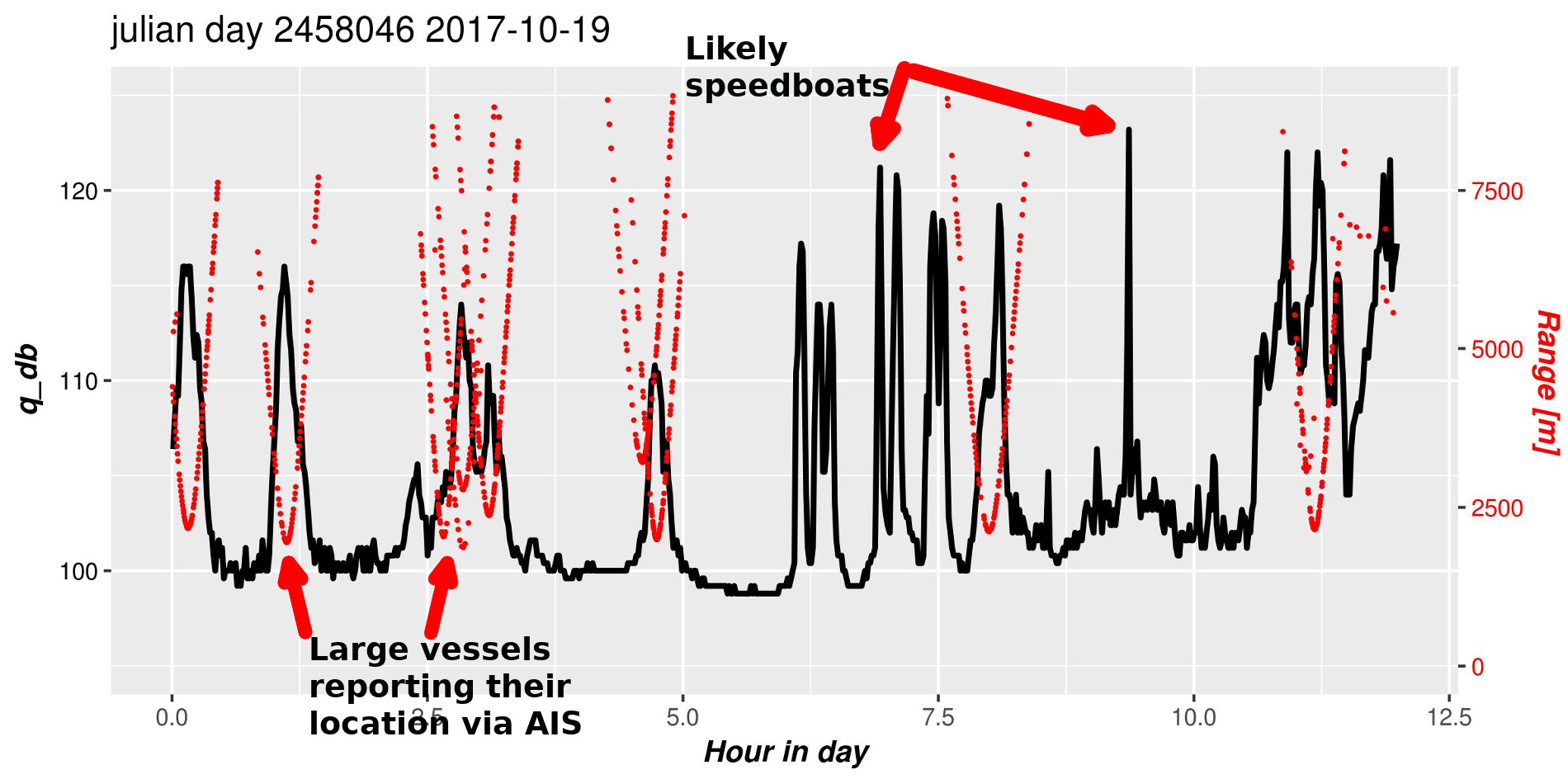
NEMES camera: source levels of boats
Video: NEMES images of 20-kt boat with computed range determining source level
12 hours of ships and boats
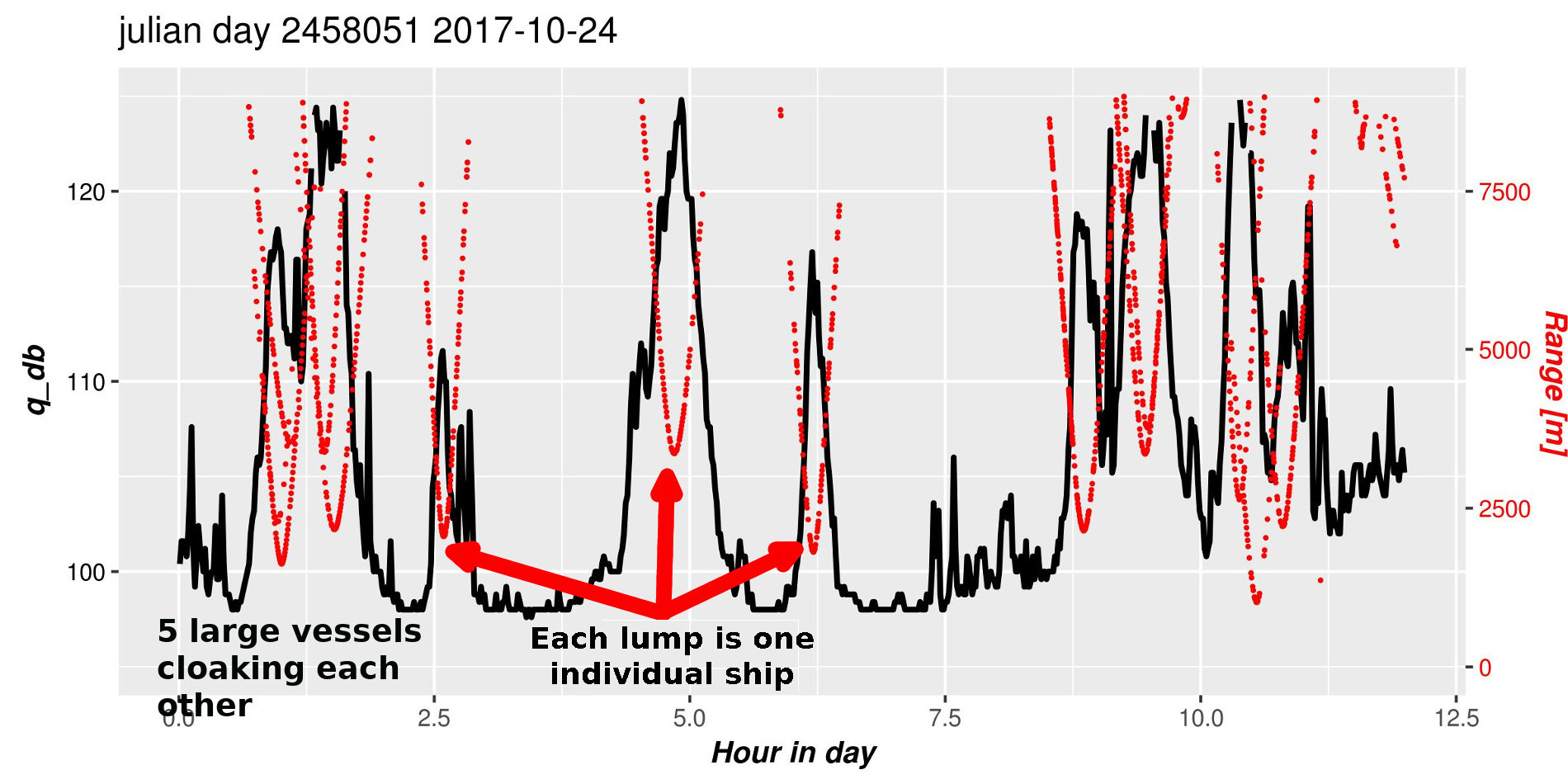
- Notice that 5 ships close together are not 5 times louder than one ship!
- They do take longer to pass by.
10 Weeks of Haro Strait Noise Statistics
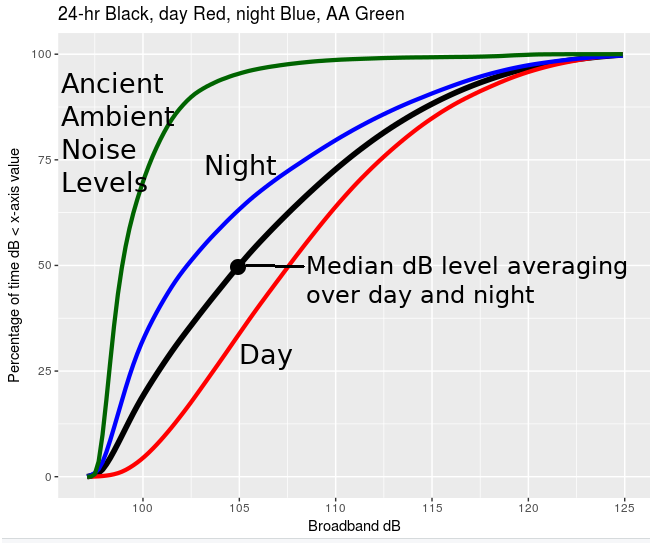
A 3dB Volume Demonstration
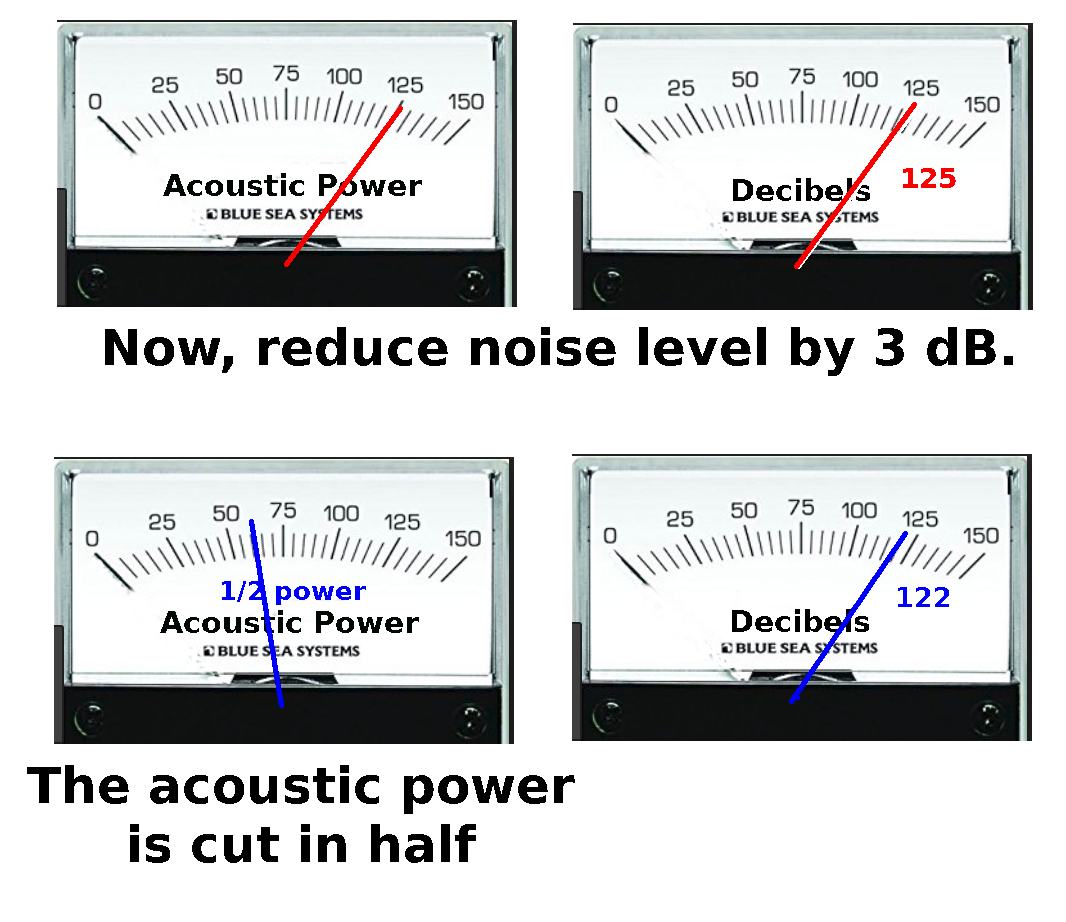
| A Noisy Ship | 3dB Quieter | Alternating |
Modeling the passby of a container ship
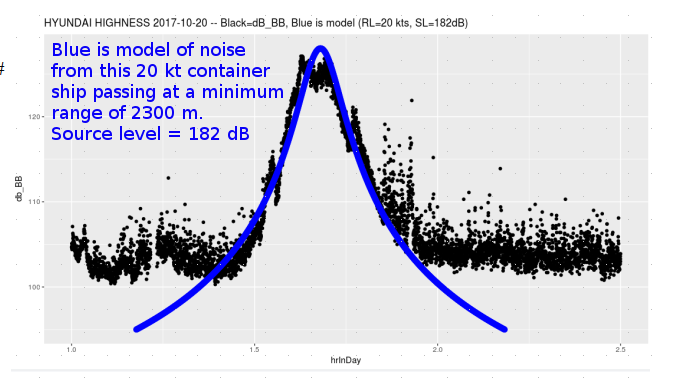
Slow the modeled ship from 20 to 11 kts
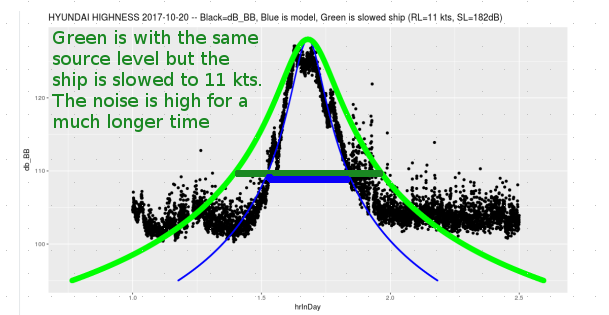
Decrease the source level by 3 dB
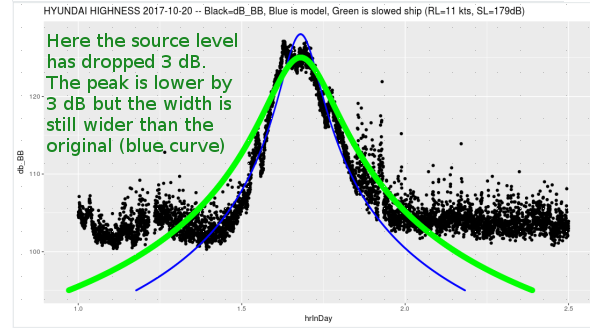
Reduce source level by total of 9 dB
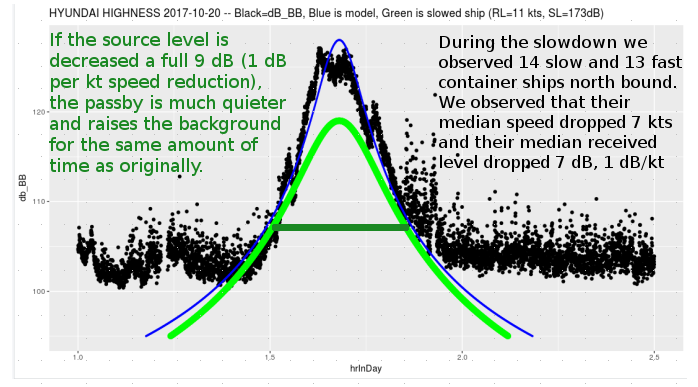
Statistical model of ships and boats
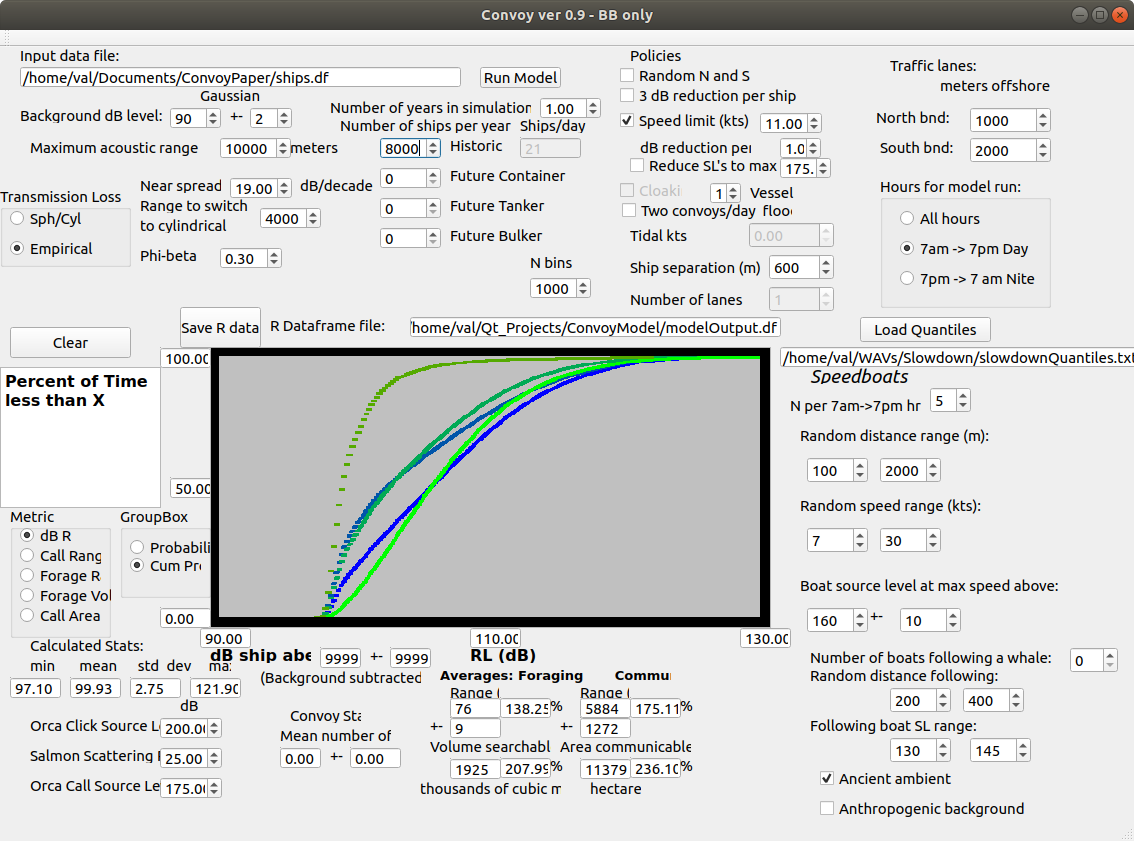
Comparison between model and the real world
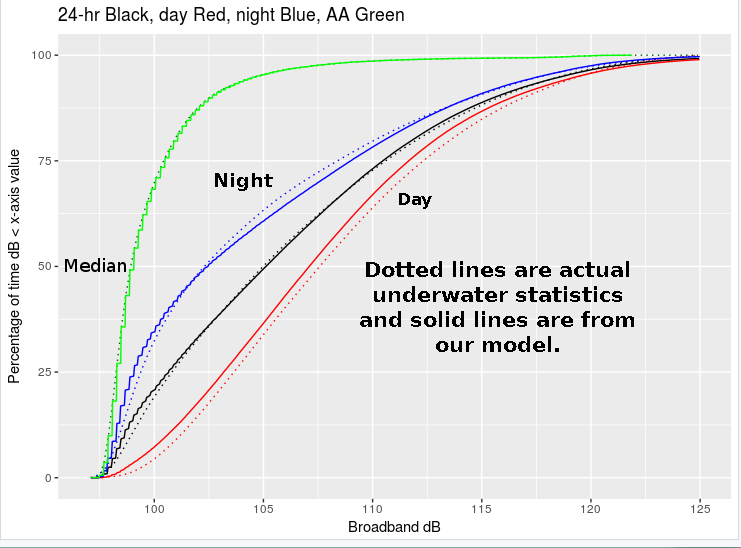
Simple model of SRKW active space
Rcomm is the maximum distance two orca can likely communicate with specified noise
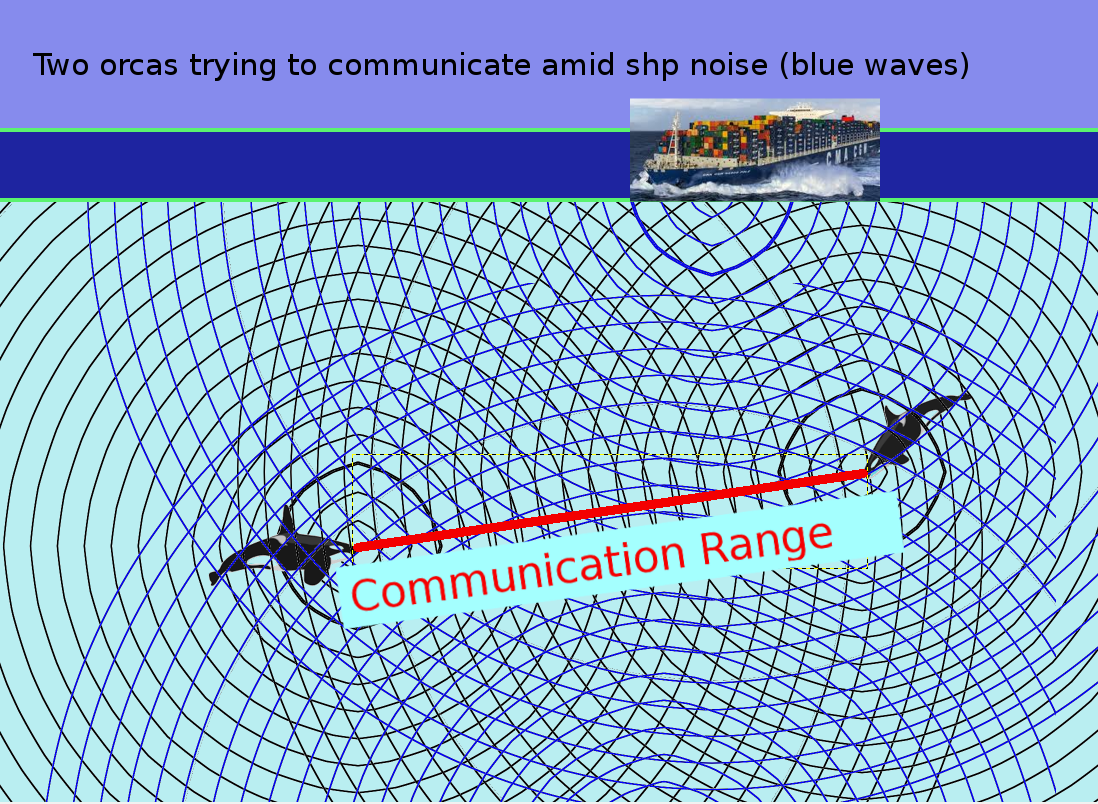
Slowdown model of communication space
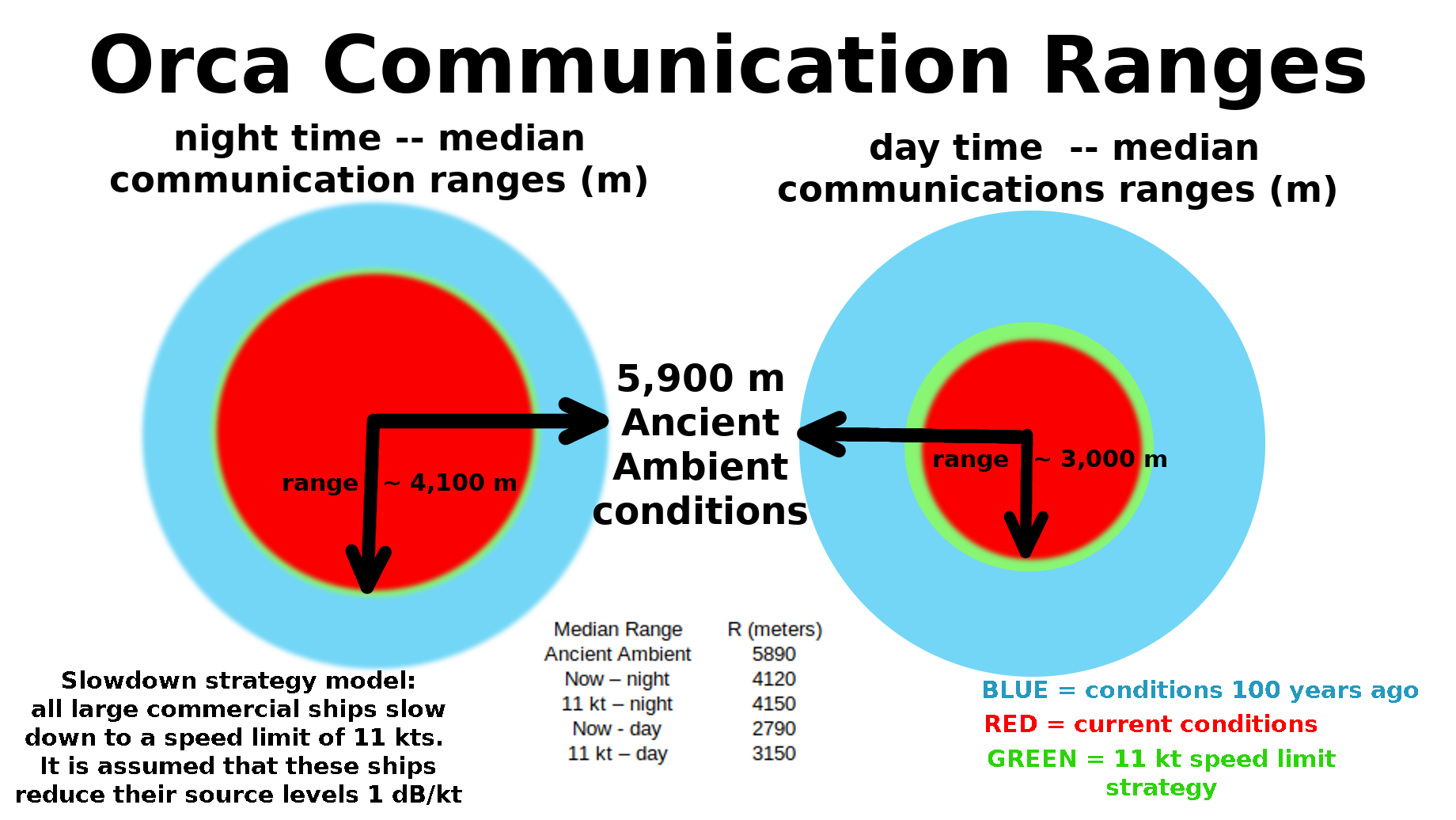
Convoy model of communication space
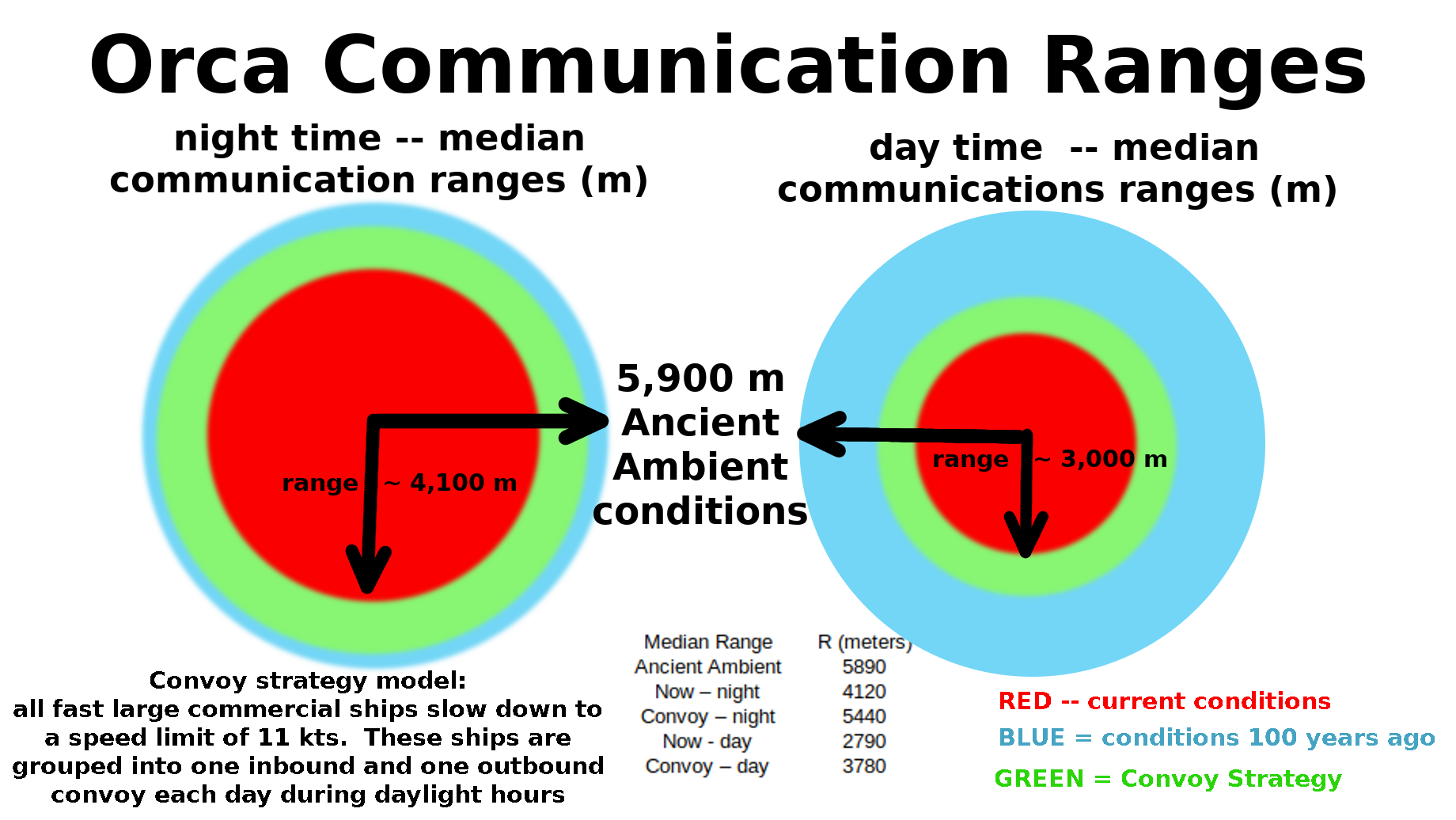
Whale watcher model of communication space
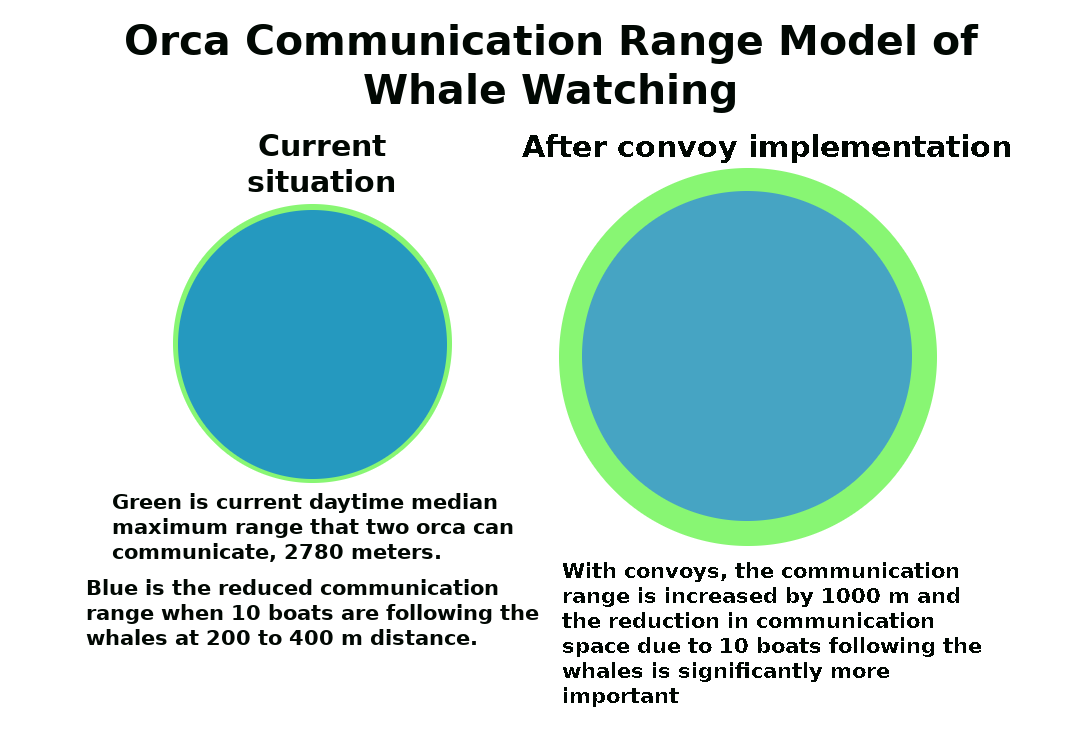
These actions to help orcas survive can be taken NOW, this spring!

|
|
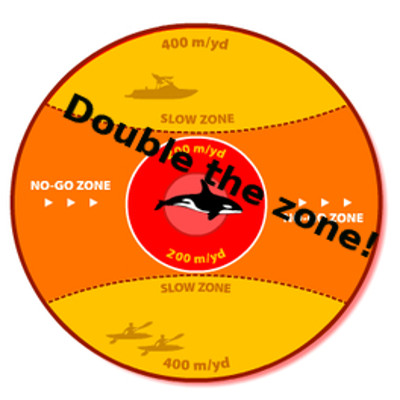
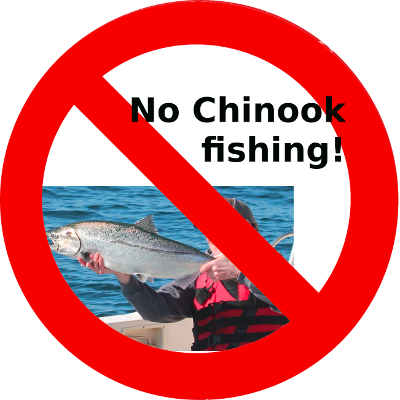
|
Future work & acknowledgements
Thank you!
- Co-authors: Lauren, Patrick, and Gregory of the NEMES/MEOPAR program at the University of Victoria
- Backers of the 2017 Orcasound Kickstarter
- Funders of the 2017 field studies: Christina Koons, Jim McIntire, Stephanie Solien, Frank Greer, & Glen and Deb Bruels.
- First slide image credit: Alan Niles, Maya's Legacy Whale Watching
/